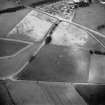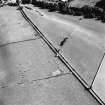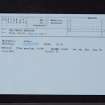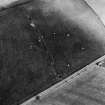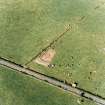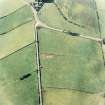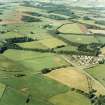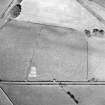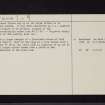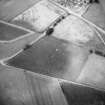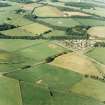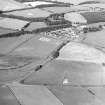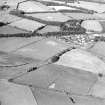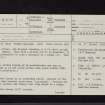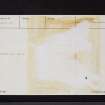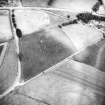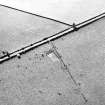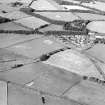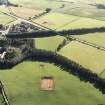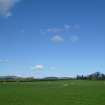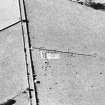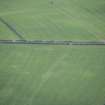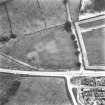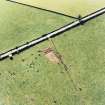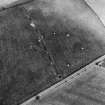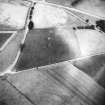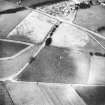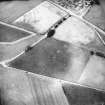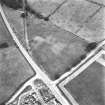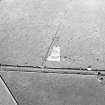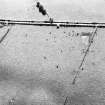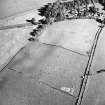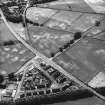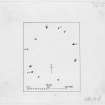Following the launch of trove.scot in February 2025 we are now planning the retiral of some of our webservices. Canmore will be switched off on 24th June 2025. Information about the closure can be found on the HES website: Retiral of HES web services | Historic Environment Scotland
The Twelve Apostles
Stone Circle (Neolithic) - (Bronze Age), Figurine (Bronze)(Period Unassigned)
Site Name The Twelve Apostles
Classification Stone Circle (Neolithic) - (Bronze Age), Figurine (Bronze)(Period Unassigned)
Canmore ID 65647
Site Number NX97NW 19
NGR NX 94700 79400
Datum OSGB36 - NGR
Permalink http://canmore.org.uk/site/65647
- Council Dumfries And Galloway
- Parish Holywood
- Former Region Dumfries And Galloway
- Former District Nithsdale
- Former County Dumfries-shire
NX97NW 19 94700 79400.
(NX 9470 7940) Twelve Apostles (NAT) Stone Circle (NR)
OS 6" map (1957)
Eleven stones, the highest standing to 6 ft above ground level, remain, They form a circle 260 ft in diameter, a size appropriate to such a monument as a henge.
R W Feachem 1963; RCAHMS 1920, visited 1913
A 4 ins bronze figure of an ecclesiastic was dug or ploughed up at the stone circle some years before 1882.
Proc Soc Antiq Scot 1882
The stone circle is as described above. Several of the stones bear natural water-worn "cup-marks". Nothing was seen to further the theory that this might be a henge.
Visited by OS (WDJ) 1 July 1964
The bronze figure dug up at the stone circle is in Dumfries Museum. It has been identified by C A R Radford as the figure of St Norbert, founder of the Premonstratensian order (see NX97NE 1 - Holywood Abbey) and is of 12th century date.
Information from A E Truckell, Dumfries Museum
This is a large example of a flattened circle of Prof Thom's Type B. Half of the ring is a true circle with a diameter of 89 m; the other side is composed of an arc of a much larger circle drawn from a point on the circumference of the first one.
E W MacKie 1975
Geophysical survey was undertaken at the Twelve Apostles stone circle (NX 947 794). This produced no indication of cut features within the circuit of the stones.
Sponsor: Historic Scotland
J Thomas 1998
Field Visit (28 May 1912)
284. Stone Circle , "Twelve Apostles," Holywood.
Extending into two fields, on the north side of the road between New Bridge and the farm of Kilness, are the remains of a very large stone circle (fig. 82). It now consists of eleven stones, of which only five remain upright. They are for the most part great masses of rock, whinstone, and coarse granite, with one or two boulders. The largest stone is that nearest to the gate into the field from the road on the west; it is wholly exposed, and measures 10 feet 6 inches in length, 7 feet 9 inches in greatest breadth, and from 3 feet 6 inches to 4 feet in thickness at base. On the lower end, which has originally been underground, are several natural cup marks. The highest of the upright stones — that diametrically opposite the last, and the sixth from it following the course of the sun — stands some 6 feet 3 inches in height above ground, and at 3 feet up measures in circumference16 feet 3 inches. The stones have seemingly been placed with their flat faces in the line of the circumference .
See Proc. Soc. Ant. Scot .,xxviii. p. 84.
OS Map (Sheet xlix . S.W.).
Visited by RCAHMS 28 May 1912.
Publication Account (1986)
Eleven out of a probable original twelve boulder stones, five of which are earthfast, make up this large 'flattened' circle. It is some 88m in maximum diameter, but, spread over two low-lying enclosed fields close to the road, its position disguises the noteworthy fact that this is the largest stone circle on the Scottish mainland and the fifth largest in Britain. What has been the largest stone, 3.2m long, lies wholly exposed in the south-western sector; the highest of the upright stones, about 1.9m high, is set on a north-easterly alignment from it.
This 'ceremonial' circle is regarded as a northern outlier of the Cumbrian group, among which Long Meg and her Daughters (NY 571373) stands supreme.
In 1837 it was reported that at Holm, about a mile to the east of the 'Apostles', there had been 'another Oruidical temple' consisting of ' nine large stones', which had unfortunately been 'broken and applied to the purposes of building'.
Information from ‘Exploring Scotland’s Heritage: Dumfries and Galloway’, (1986).

















































